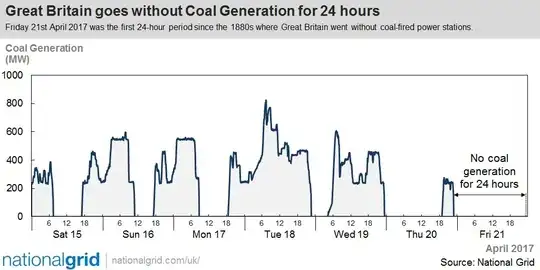On Friday 21st April, the UK National Grid announced the following on twitter:
National Grid can confirm that for the past 24 hours, it has supplied GB's electricity demand without the need for #coal generation.
They further clarified in a following tweet:
Today's average generation mix so far has been gas 50.3%, nuclear 21.2%, wind 12.2%, imports 8.3%, biomass 6.7%, solar 3.6%
When I speak to people living here in the UK or abroad about this, they bring up that it is unclear whether:
- coal stations were totally shut down for that 24 hour period (and other 6–8 hour periods earlier that week) and thus not burning coal or generating pollution, or
- coal stations were running, burning coal, and generating power (which was either consumed elsewhere or entirely wasted) but Great Britain was powered without coal generation for the period.
I agree with them that it's ambiguous. A common point of doubt has been that surely they can't just shut down and start up the coal plants that fast.
Someone in the twitter thread requested some clarity around this, to which National Grid did not reply: “Were there plants burning coal, but they weren't feeding the grid? Or were they all totally cold?”
Were coal power stations running and generating power that Great Britain didn't use, or were they actually shut down?


